Accelerating the Robot Dream
Empowering robot innovation, providing full-cycle development services, reducing costs, and accelerating the commercialization process.
Contact Us +

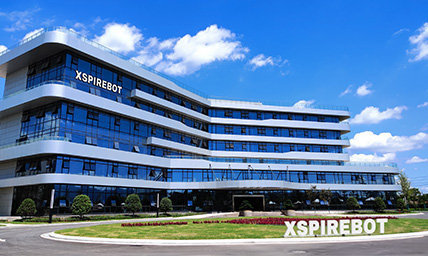
Henan Xspirebot
Xspirebot specializes in the design, production, and servicing of robot platform solutions.
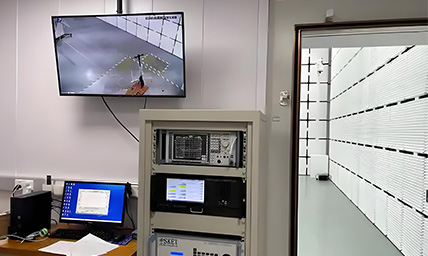
Quality Control
A comprehensive quality control system that manages everything from raw materials to finished products.

Service & After sales
24-hour after-sales service. Please do not hesitate to contact us if you have any questions.

Download
XspireBot provide downloads of product catalogs, product solutions, and user manuals.

Key Member
Ten years of mass production experience and 32 patents in motion control.
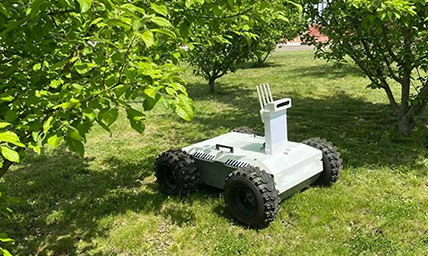
Agricultural Industry
Agricultural robot chassis assists you in field operations such as sowing, spraying, and harvesting.
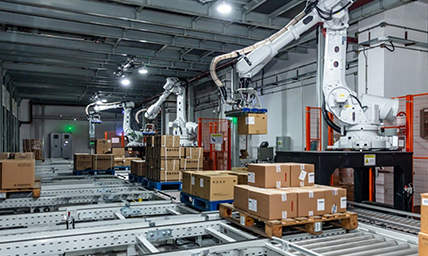
Manufacturing Industry
Industrial robot chassis assist you with tasks such as material handling, assembly, and quality inspection.
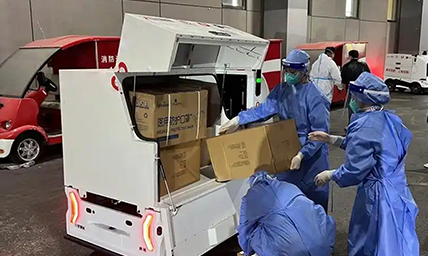
Transportation Industry
Autonomous transport robots that can deliver goods around the clock in urban and industrial environments.
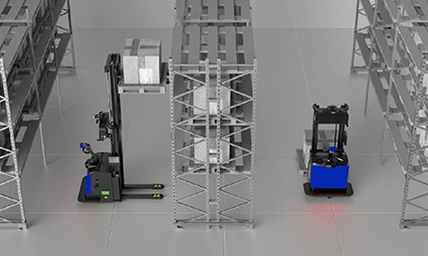
Warehousing Industry
Unmanned transport robots enable full autonomy in cargo stacking & transfer within IoT logistics.
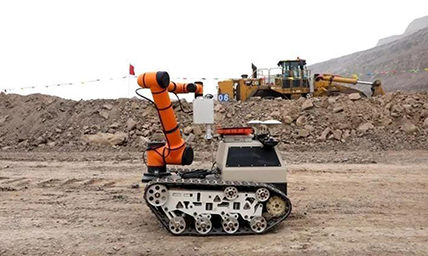
Inspection Industry
Autonomous 24/7 patrols at power facilities, industrial sites, data centers, and other locations.
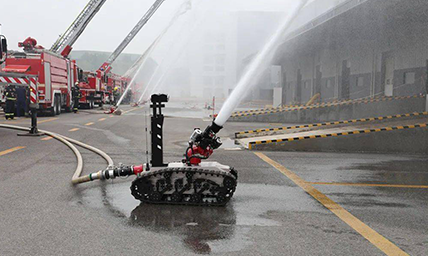
Firefighting Industry
Autonomous fire detection & suppression in high-risk environments: high-rises, chemical plants, and data centers.
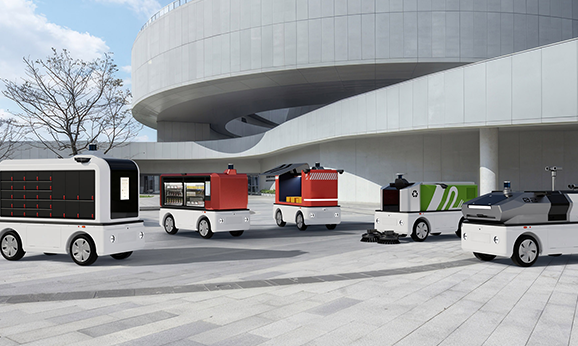
Robot Chassis
Xspirebot offers chassis for indoor and outdoor mobile robots suitable for different terrains.
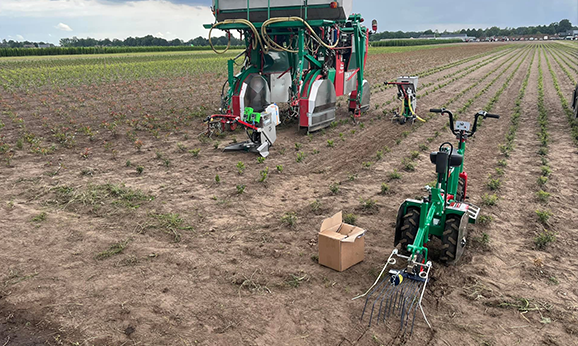
Motors
Drive motor designed for mobile robot chassis, applied to mobile robot platform & agricultural robot chassis.
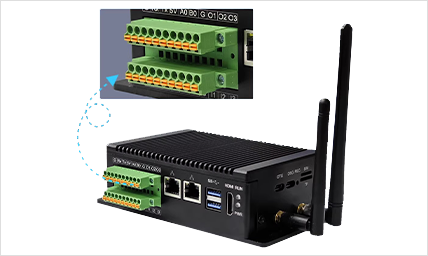
Controller/Drive
The controller can control the robot chassis's movement, positioning, obstacle avoidance, path planning, and other motion functions.

Sensor
Xspirebot offers advanced sensors for autonomous robot platforms: cameras, ultrasonic radar, LiDAR, IMU, & IINS.

Electric Motor Axle
Xspirebot adapts electric transaxle load, power output, & layout to meet customer needs.
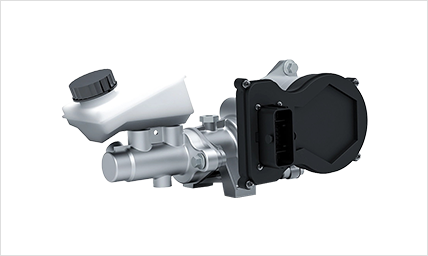
Wired Components
Line control braking & steering enhance vehicle control efficiency & precision via electronic signals.

Energy
Solar panels & batteries offer flexible solutions, letting you choose components to suit your needs.
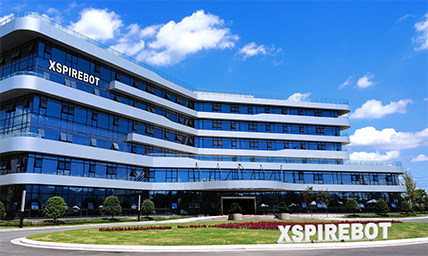
Company News
Xspirebot is committed to helping our customers reduce development costs, shorten the R&D cycle, and accelerate the mass production process through platformized and modularized architectural design and standardized production processes.
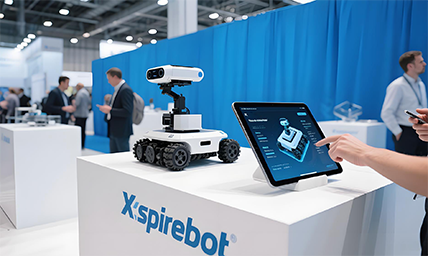
Exhibition News
Xspirebot is committed to helping our customers reduce development costs, shorten the R&D cycle, and accelerate the mass production process through platformized and modularized architectural design and standardized production processes.
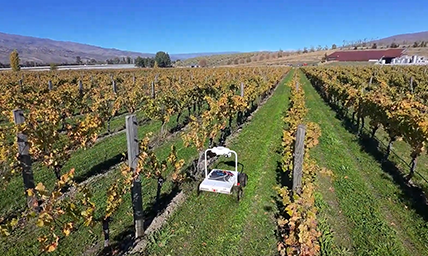
Industry News
Xspirebot is committed to helping our customers reduce development costs, shorten the R&D cycle, and accelerate the mass production process through platformized and modularized architectural design and standardized production processes.
Four-Turn Four-Wheel Drive Chassis
The 4x4 robot chassis is a high mobility mobile platform with four independent steering wheels and four independent drive wheels, each wheel can be accurately controlled by servo or stepper motors to control the steering angle and drive power, to realize omni-directional freedom of movement, such as lateral movement, in-situ rotation, especially for complex terrain (independent drive to enhance the stability of the obstacle).
The chassis is widely used in industrial automation (AGV logistics, equipment inspection), special fields (explosive rescue, military reconnaissance), scientific research and education (motion control research, competition robots) and service robots (commercial cleaning, agricultural work) and other scenarios, especially suitable for narrow spaces, dynamic environments or high-precision operational needs.
Omni-directional flexible movement
In-situ rotation and small radius steering: through four-wheel synchronized steering (e.g. 90° lateral shift) or differential control, zero-radius steering is achieved, breaking through the limitations of traditional vehicle steering radius and adapting to narrow spaces (e.g. warehouse shelves, inside pipes).
Multi-mode motion synergy: supports lateral movement, oblique travel (45°), and dynamic path adjustment to meet the real-time obstacle avoidance needs in dynamic environments (e.g. crowded areas, sudden obstacles).
Complex Terrain Adaptability
Unstructured terrain adaptation: four-wheel independent drive provides distributed power output to enhance grip (e.g, sand, mud, snow), combined with a suspension system or anti-skid tires to effectively cope with bumpy, soft, or sloping terrain (e.g, mountainous terrain, jungle slopes).
Overcoming obstacles and stability: The single-wheel independent suspension design can increase the height of overcoming obstacles (e.g. steps over 20cm), together with the dynamic center of gravity distribution algorithm, to ensure stability in extreme terrain.
High degree of freedom control and redundancy
Independent Power Distribution: Each wheel can control the speed and torque individually, realizing precise power deployment (e.g, diagonal wheel reverse rotation assisted steering), improving energy efficiency and response speed.
Fault tolerance: When a single drive or steering unit fails, the base movement can still be maintained through algorithmic compensation (e.g, three-wheel drive + directional skidding), guaranteeing mission continuity.
Precise operation and high dynamic response
Millimeter-level positioning accuracy: Combining encoder, IMU, and LIDAR, it supports high-precision SLAM navigation and path tracking to meet the demanding needs of industrial automation (e.g, AGV logistics).
Fast dynamic adjustment: millisecond response to external commands, real-time adjustment of motion modes (e.g, emergency obstacle avoidance, sudden speed change), and adaptation to dynamic environments (e.g, crowded areas).
High reliability and redundancy design
Power redundancy: when a single drive or steering unit fails, the base movement can still be maintained through algorithmic compensation (e.g. 3-wheel drive + directional skidding).
Environmental resistance: IP54 and above protection level, adapt to high temperature (fire scene), low temperature (snow), dust (construction site) and other harsh working conditions.
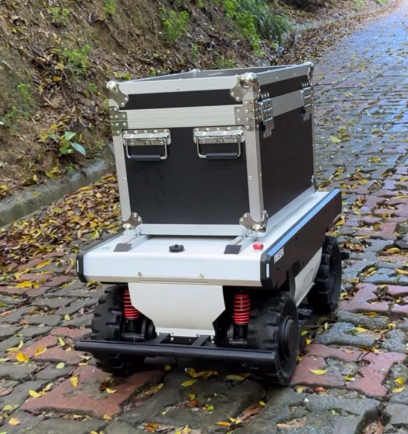
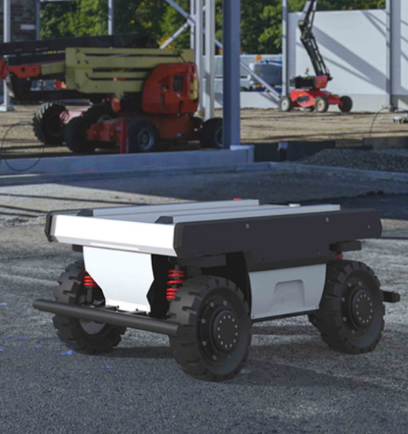
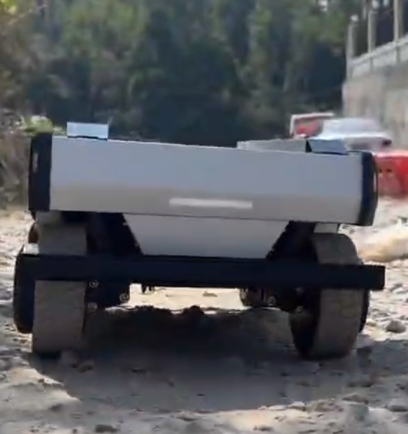
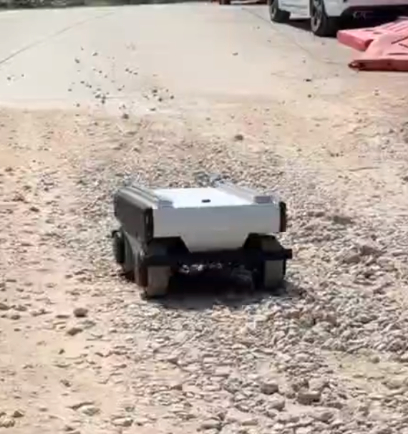
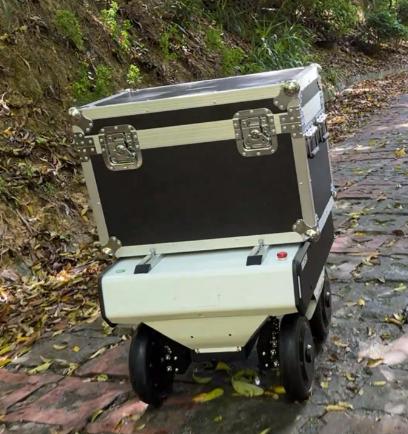
Components
The four-turn, four-wheel-drive robot chassis realizes complex motion control through modular design, and its core components can be disassembled into the following eight modules, with each part working in tandem to achieve omnidirectional movement and terrain adaptability:
1. Drive unit (4 groups)
Drive motors: brushless DC motors (BLDC) or servo motors to provide power output (power range customized according to load requirements).
Reducer: Planetary reducer or harmonic reducer to reduce the speed and increase the torque (reduction ratio is usually 5:1~20:1).
Encoder: magnetic encoder or photoelectric encoder, real-time feedback of wheel speed and position.
Function: Independently control the speed and torque of each wheel, support distributed power distribution (e.g. differential steering, single-wheel obstacle crossing).
2. Steering unit (4 groups)
Steering motor/servo: high-precision servo motor or digital servo (such as RS485 bus servo), to control the steering angle (range 0°~180°, accuracy ±0.1°).
Mechanical transmission mechanism: worm gear or gear set, converting motor rotation into wheel steering angle (anti-backlash design is required).
Limit Sensor: Hall sensor or mechanical limit switch to prevent damage to the structure by steering over-travel.
Function: Realize four-wheel synchronous/asynchronous steering, support in-situ rotation, lateral movement and other omnidirectional motion modes.
3. Wheels and Tires
Type selection:
Standard wheel: made of rubber or polyurethane, suitable for flat ground (e.g. factory AGV).
Off-road wheels: non-slip tires with toothed tread for enhanced grip on soft terrain such as sand and snow.
McNamee wheels: special oblique ball design to simplify omnidirectional movement control (higher cost).
4. Suspension system (optional)
Elastic elements: coil springs, air springs or rubber shock absorbing blocks to cushion the impact of bumpy road surfaces.
Guiding mechanism: double wishbone or multi-link structure to keep the wheels vertically attached to the ground (e.g. mountain robot chassis).
Damping: Hydraulic or magnetorheological shock absorbers dynamically adjust the stiffness to adapt to different terrains.
Function: Improve stability and obstacle-crossing ability (e.g., crossing 20cm steps or gravel roads).
5. Central Controller
Main control chip: ARM Cortex-M7, FPGA or embedded computer.
Motion control algorithm: Integrated inverse kinematics model (e.g. mapping based on Jacobi matrix) to decompose the target speed into commands for each wheel.
Communication interface: CAN bus, RS485, or EtherCAT for high-speed multi-axis synchronized control.
Function: Coordinate 12 degrees of freedom (4 wheels steering + 4 wheels driving), process sensor data, and perform tasks such as obstacle avoidance and path planning.
6. Sensor system
Inertial Measurement Unit (IMU): detects attitude angle, acceleration, and angular velocity.
Odometer/Encoder: records wheel speed and displacement (incremental or absolute encoder).
LiDAR (Laser Radar): builds maps and avoids obstacles.
Depth camera: RGB-D data to aid navigation.
Ultrasonic/IR sensors: proximity obstacle detection.
Function: provide real-time data input for SLAM navigation, dynamic path planning.
7. Power management module
Battery pack: High energy density lithium battery.
BMS (Battery Management System): Monitor voltage, current and temperature to prevent over-discharge/over-charge.
Power Distribution Board: Multiple DC-DC converters to power motors, controllers, and sensors.
Function: Balance range and weight (industrial grade chassis can last up to 4~8 hours).
Argumet
| Applicable venues | Indoor and outdoor complex road conditions in multiple scenarios (asphalt roads, grass, gravel roads, epoxy flooring, obstacle crossing, climbing slopes) | |||
| Sports mode | Four-wheel drive (omnidirectional mode) | |||
| Model | FW-mid | FW-mid pro | FW-max | FW-max pro |
| Image | 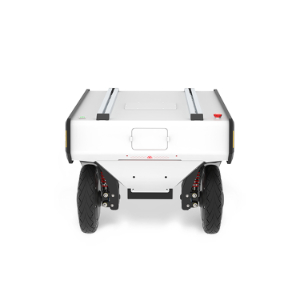 | 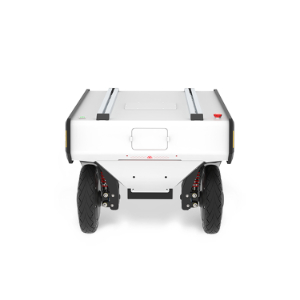 | 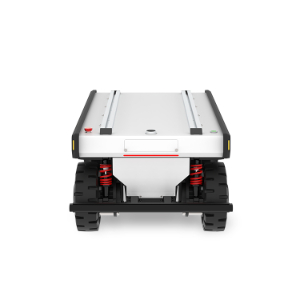 | 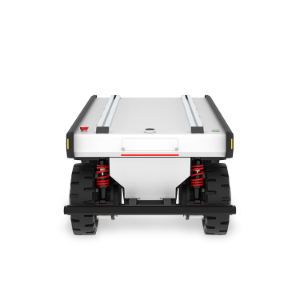 |
| Dimensions | 680*550*440mm | 680*550*440mm | 960*550*395mm | 960*550*395mm |
| Load capacity | 50KG | 100KG | 150KG | 250KG |
| Speed (full load test) | 5.4km/h | 5.4km/h | 5.4km/h | 7.2km/h |
| Empty load range | 40km | 40km | 32km | 40km |
| Drive motor | 350W*4 servo motors | 350W*4 servo motors | 600W*2 | 600W*4 |
| External power supply | 12V/15A-24V/15A-48V/10A | 12V/15A-24V/15A-48V/10A | 12V/15A-24V/15A-48V/10A | 12V/15A-24V/15A-48V/10A |
| Braking method | Motor braking | Motor braking | Motor braking | Motor braking |
| Parking method | Motor parking + parking posture | Motor parking + parking posture | Electromagnetic brake, motor parking | Electromagnetic brake |
| Water depth | 100mm | 100mm | 50mm | 50mm |
| Maximum climbing angle | No load 30°/full load 15° | No load 30°/full load 15° | No load 30°/Full load 10° | No load 30/Full load 10* |
| Crossing width | Full load 120mm/No load 160mm | Full load 120mm/No load 160mm | Full load 120mm/No load 150mm | Full load 120mm/No load 210mm |
| Obstacle height | Full load 40mm/No load 60mm | Full load 40mm/No load 60mm | Full load 40mm/No load 60mm | Full load 50mm/No load 110mm |
| Communication method | CAN 2.0B | CAN 2.0B | CAN 2.0B | CAN 2.0B |
| Battery capacity | 48V/20Ah | 48V/20Ah | 48V/27AH | 48V/40AH |
| Charging time | 4–5 hours | 4-5 hours | 3h | 4-5 hours |
| Charging method | 48V/5A Manual charging/automatic charging | 48V/5A Manual charging/Automatic charging | 48V/10A Manual charging/Automatic charging | 48V/10A Manual charging/Automatic charging |
| Protection rating | IP33 | IP33 | IP44 | IP44 |
Application Scenarios
Four-wheel-drive four-turn chassis With its omnidirectional mobility, adaptability to complex terrain and high degree of freedom control, it can seamlessly adapt to diversified scenarios and become the core mobile platform for industrial, specialty and outdoor operations.
Industrial automation and logistics
Warehousing and factory AGV: Flexibly shuttle between narrow shelves to complete cargo handling and sorting tasks, supporting efficient dynamic path planning.
Equipment inspection robot: in electric power, chemical industry, energy and other industries, adapting to pipeline-intensive areas, steps or uneven ground, to realize automated inspection.
Specialized and high-risk environments
Explosive-detonation and rescue robots: move quickly in disaster sites (such as earthquake ruins and fire areas), adjust posture to cross obstacles, and perform dangerous tasks.
Military reconnaissance robots: moving covertly in the field in complex terrain (mountains, jungles), supporting battlefield monitoring or material transportation.
Service and outdoor applications
Commercial cleaning robots: moving without dead angles in crowded areas such as shopping malls and airports, avoiding obstacles and working efficiently.
Agricultural robots: perform spraying and picking tasks accurately on soft ground or uneven terrain in the field.
Outdoor exploration robots: Geological exploration or environmental monitoring, adapting to sand, grass, gravel roads and other complex ground.
Medical and Emergency Response
Hospital material transportation robots: move flexibly in narrow spaces such as corridors and elevator rooms to efficiently deliver medicines or instruments.
Firefighting robot: Stable driving in high temperature or smoke environment, close to the source of fire to perform fire extinguishing or search and rescue tasks.
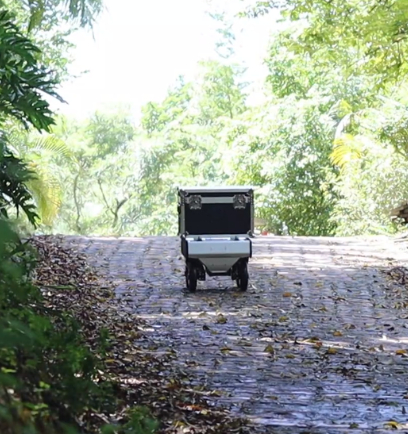
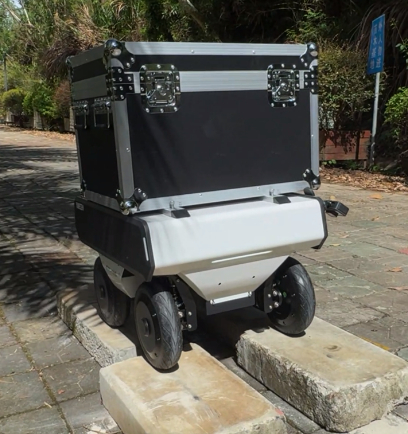
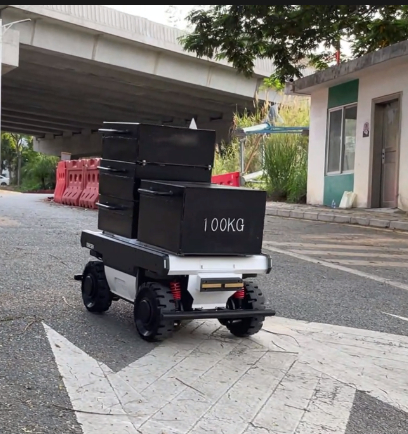
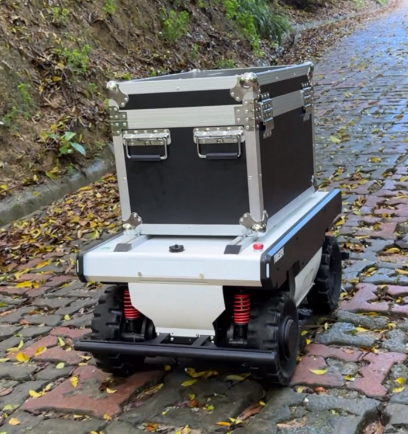
Product Classification
Accelerating the Robot Dream
Empowering robot innovation, providing full-cycle development services, reducing costs, and accelerating the commercialization process.
Contact Us +